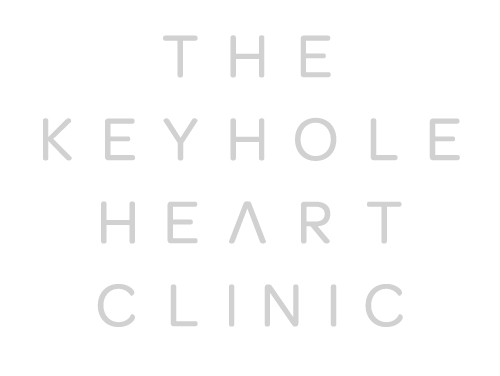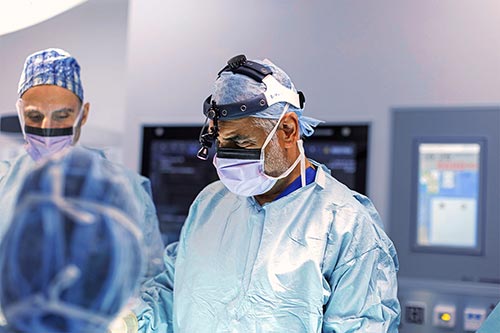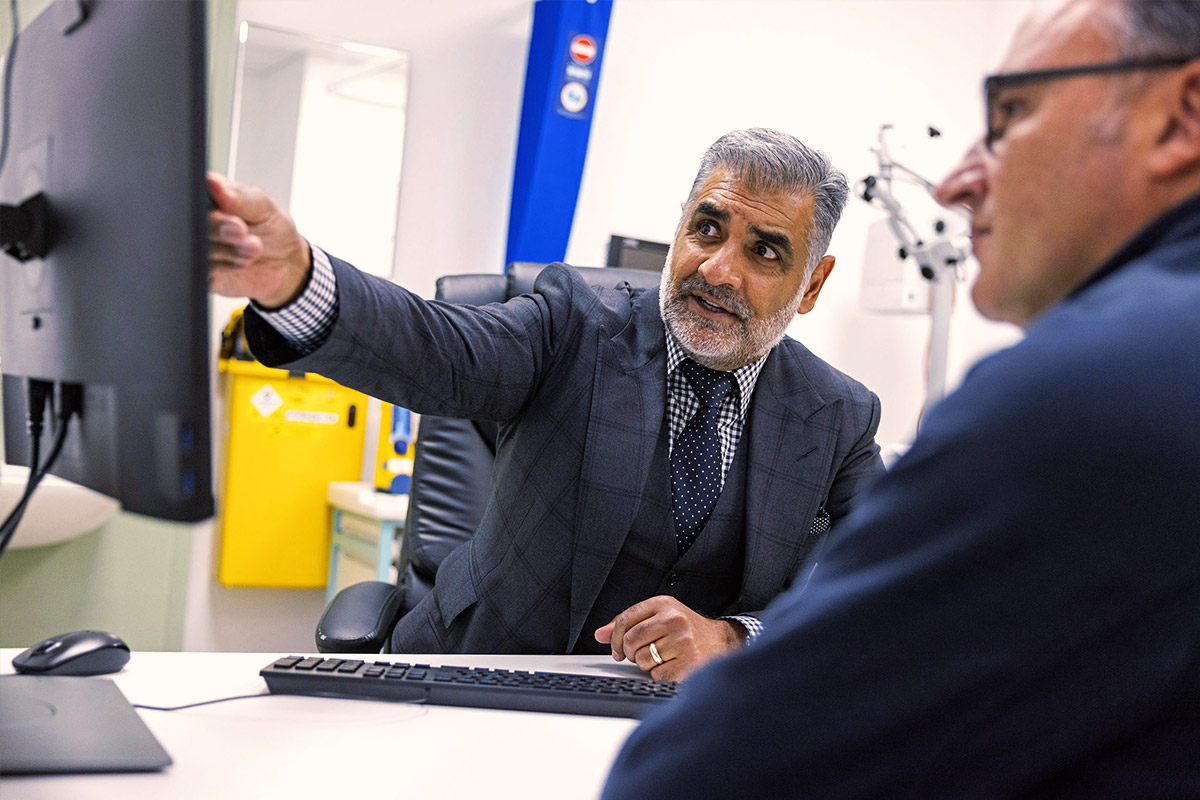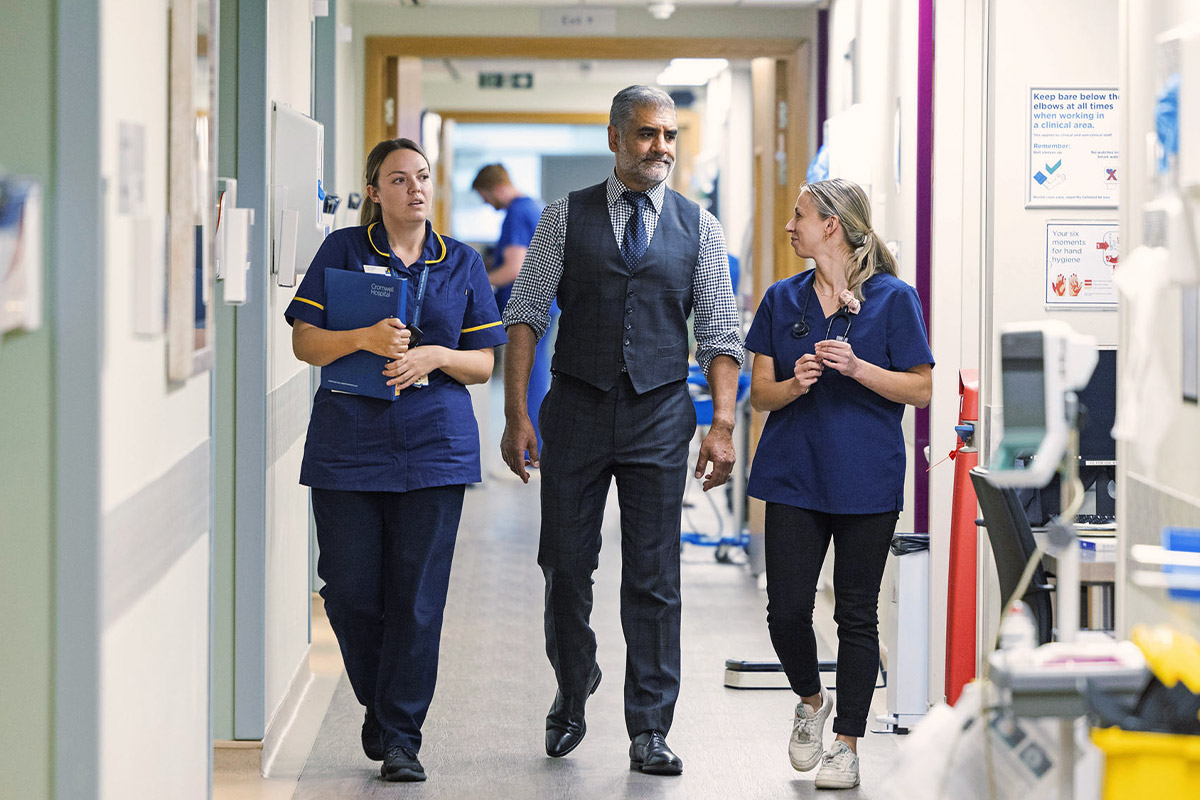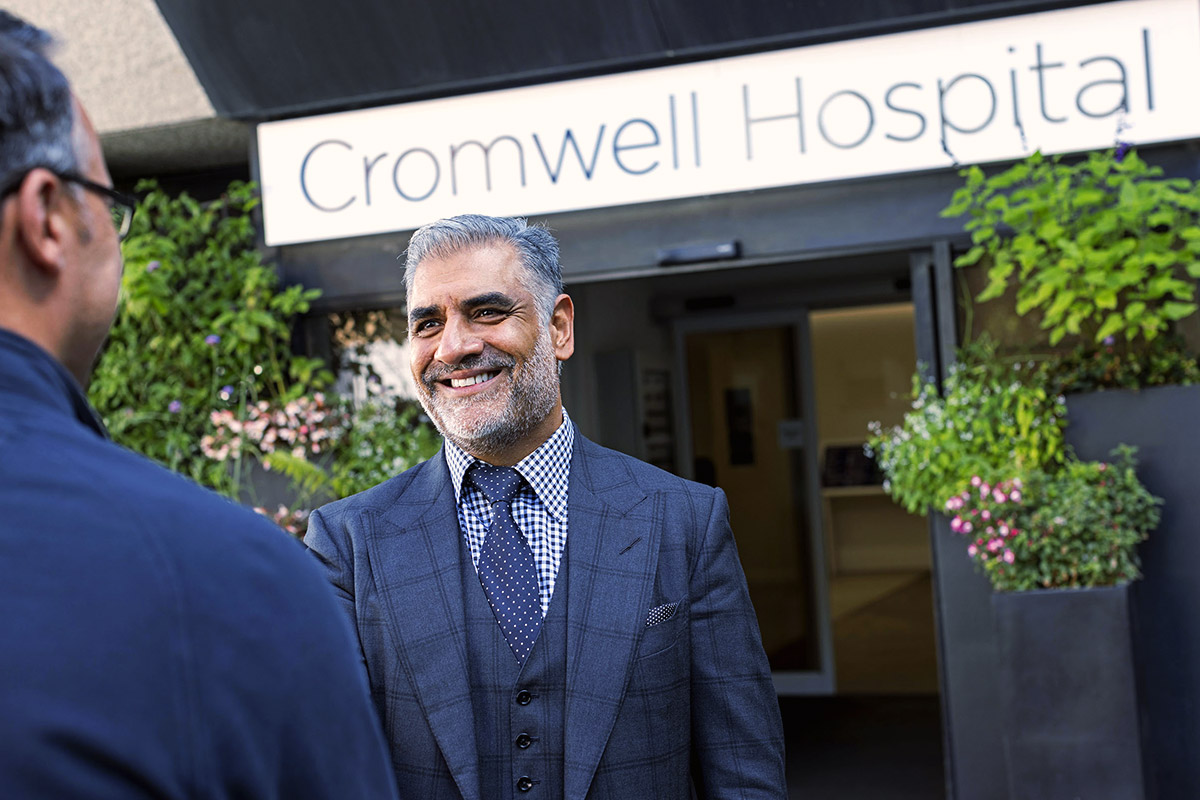Heart Bypass By Keyhole Surgery
Read MoreASSOCIATED CONDITIONS
Keyhole Coronary Bypass Surgery
Patients who develop narrowed heart arteries often require surgery to bypass the narrowed arteries. This operation is usually performed through a large breastbone cut. Most patients call this surgery CABG or “triple bypass” or “quadruple bypass” depending upon the number of bypass grafts performed. This is a good operation designed to make you feel better and live longer. The problem though is that the breastbone cut takes three months to heal and this slows down recovery from the surgery.
Some surgeons, like Mr Birdi and his team at The Keyhole Heart Clinic,, perform the same surgery through a small cut between the ribs over the right side of the chest. This is called keyhole coronary bypass surgery or Minimally Invasive Direct Coronary Artery Revascularisation (MIDCAB). MIDCAB is most commonly used in patients with disease of an important artery on the front of the heart called the Left Anterior Descending Artery (LAD).
It is also possible to graft two, three or even more arteries using keyhole heart surgery. This is a highly skilled procedure and Mr Birdi is one of the few surgeons in the world performing this procedure.
Multi-vessel Keyhole Coronary Artery Surgery
The aim of multi-vessel keyhole coronary artery bypass (Multi-MIDCAB) is to aim to bypass blocks in more than one heart artery through a small cut in between the ribs on the left side of the chest. Multi-MIDCAB can be performed on the beating heart or sometimes the surgeon stops the heart on a heart lung bypass machine as in traditional breastbone CABG surgery. The surgeon will wish to see your angiogram and also perform a CT scan of your aorta pipe in case the heart lung bypass machine is needed. Mr Birdi and his team are very experienced in MIDCAB and Multi-MIDCAB surgery.
There is no doubt that surgical revascularisation of the LAD vessel offers a much better long-term clinical outcome compared to stenting of the artery, and the recovery from MIDCAB in experienced hands offers significantly reduced hospital stay, with healing within days rather than weeks when compared with traditional surgery through the breastbone cut. The principle of Multi-MIDCAB is to extend this surgical benefit across all areas of the heart where blood supply is impaired.
Hybrid Keyhole Coronary Bypass Surgery
Not all patients are suitable for Multi-MIDCAB. To widen the benefits of keyhole coronary bypass surgery to more patients, a procedure called Hybrid Keyhole Coronary Bypass Surgery can be offered to some patients. This treatment involves two procedures performed either on separate occasions or at the same time, which is designed to offer the superior benefits of revascularisation of the LAD via the MIDCAB opening, followed by treatment of any remaining narrowed arteries using stents, the ultimate aim being to avoid the breastbone cut.
Until recently, little was known about the immediate and long-term outcomes of this approach. In a recent article to be published in The Journal of the American College of Surgeons, Hybrid Keyhole Coronary Bypass Surgery was compared with traditional multi-vessel bypass grafting via breastbone division.
Hybrid Keyhole Coronary Bypass Surgery was associated with:
- Reduced rates of in-hospital major complications
- Reduced blood transfusion use
- Reduced chest tube drainage (blood loss)
- Reduced postoperative length of stay
Hybrid therapies can be used to treat coronary disease and valve disease through keyhole techniques. Contact us to learn more about these treatments.
Coronary Stent Insertion
This is a very effective therapy for certain types of isolated disease of the coronary arteries. A catheter is placed into the coronary artery using coronary angiography (click for video), and a small balloon can be used to inflate the diseased area . This area can then be held open with a coronary stent (click for video). The advantage of this approach is that it can be performed as a day case, and requires no surgery. The catheter is inserted into the body via a wrist or groin vessel. The disadvantage of this approach is that the stent can block over time leading to recurrence of symptoms. Stents are used very effectively in emergency situations to stop a heart attack from creating irreversible cardiac muscle injury. This is why you must always call for an ambulance if you think you are having a heart attack.
Surgery for certain types of disease is more likely to offer you better long-term results. This is particularly true for multiple lesions, and for high grade proximal lesions. Your cardiologist and surgeon will be able to make the correct judgement for you regarding the suitability of stenting or surgery.
How Can Mr Birdi and His Team Help You?
If you have been told that your require coronary bypass surgery and you are interested to know more about your suitability for MIDCAB or Multi-MIDCAB, you can call us or send us an appointment request. You can even book in to Mr Birdi’s diary directly using the Book An Appointment Link below.
Once Mr Birdi has met you, he will discuss your case with multidisciplinary coronary intervention team to ensure the pros and cons of these different strategies can be assessed for you. If you decide to proceed with surgery, we can arrange this very quickly. In some cases, Multi-MIDCAB is not possible and we will then assess your suitability for Hybrid Coronary Artery Bypass Surgery. In an event, you can be certain that your care will be delivered by the best surgeons and cardiologists available today. The surgery is currently only available at our London Heart Clinic.
Services
How We Can Help You
